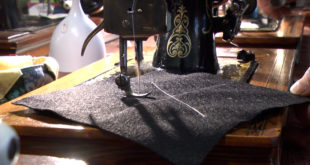High water levels in the Great Lakes is causing government agencies to issue warnings to swimmers.
The U.S. Army Corps of Engineers, Detroit District, strongly urges individuals to use caution around breakwaters, piers or jetties and to adhere to posted warning signs.
There have been 35 drownings in the Great Lakes already this year. Though not all of these drownings occurred at harbor structures, it is a grim reminder of the risks and dangers that are present when in and around water.
Many accidents and incidents near harbor structures occur during the turbulent weather season from late August through December, but higher than normal water levels also pose safety threats year round.
High water levels create safety hazards, such as submerged breakwaters, dangerous rip currents and risk of electric shock.
Submerged Structures. Use extreme vigilance while boating – many piers, docks and portions of breakwaters are currently under water and not visible above the water surface. Winds often affect local water levels, pushing them dramatically higher during storms and windy days. Structures that may be visible on a calm day may not be visible on a windy day.
Although breakwater structures were primarily built for navigation, they are also often used for recreation.Walking along breakwater structures can be hazardous – the uneven slippery surfaces, especially when doubled with wave action, increases the risk of falling in to the water. In addition, large armor stones may be hidden below the water surface. There is significant risk of getting wedged between armor stones or striking a stone with one’s body, should an individual fall or jump into the water.
Rip Currents. Water circulation can differ with changes in water levels from what people are used to. When water levels, wind and waves increase, so does the risk of dangerous currents. Rip currents and structural currents are a common cause of drowning. Rip currents are fast-moving, narrow currents of water that flow away from shore. Structural currents can occur at fixed structures such as breakwaters and piers, and flow away from shore parallel to the structure. To get out of a rip current, it is advised to “Flip, Float, Follow” until the current subsides to save your energy and reduce your risk of drowning.
Electric Shock and Drowning. Electric shock drowning is an increased risk due to high water levels. Water-overtopped docks at marinas or public areas may have electrical hook-ups, which have the potential to shock someone that has come in contact with the water. When immobile due to shock, the risk of drowning increases.
Other Water Dangers. Cold water, even in summer months, can be a significant safety threat to swimmers. Water can quickly drop in temperature up to 30 degrees when upwelling takes place, which is caused when winds push warm surface water away from an area and cold water moves in. Being immersed in cold water (60°F degrees and colder) can cause cold water shock during the first minute of exposure. Cold water shock causes gasping and difficulty in breathing, followed by muscle failure, all of which can lead to drowning.
Corps of Engineers Breakwater Safety Precautions—
- Closely supervise your children
- Life jackets are recommended to be worn when on any structure
- Do not jump, dive off, or swim near structures
- Stay off structures during high winds or when waves are washing over them
- Avoid walking upon wet slippery areas
- Stay away from the edge
- Do not run or climb upon structures
 Keweenaw Report Your Source for Local News and Sports
Keweenaw Report Your Source for Local News and Sports





